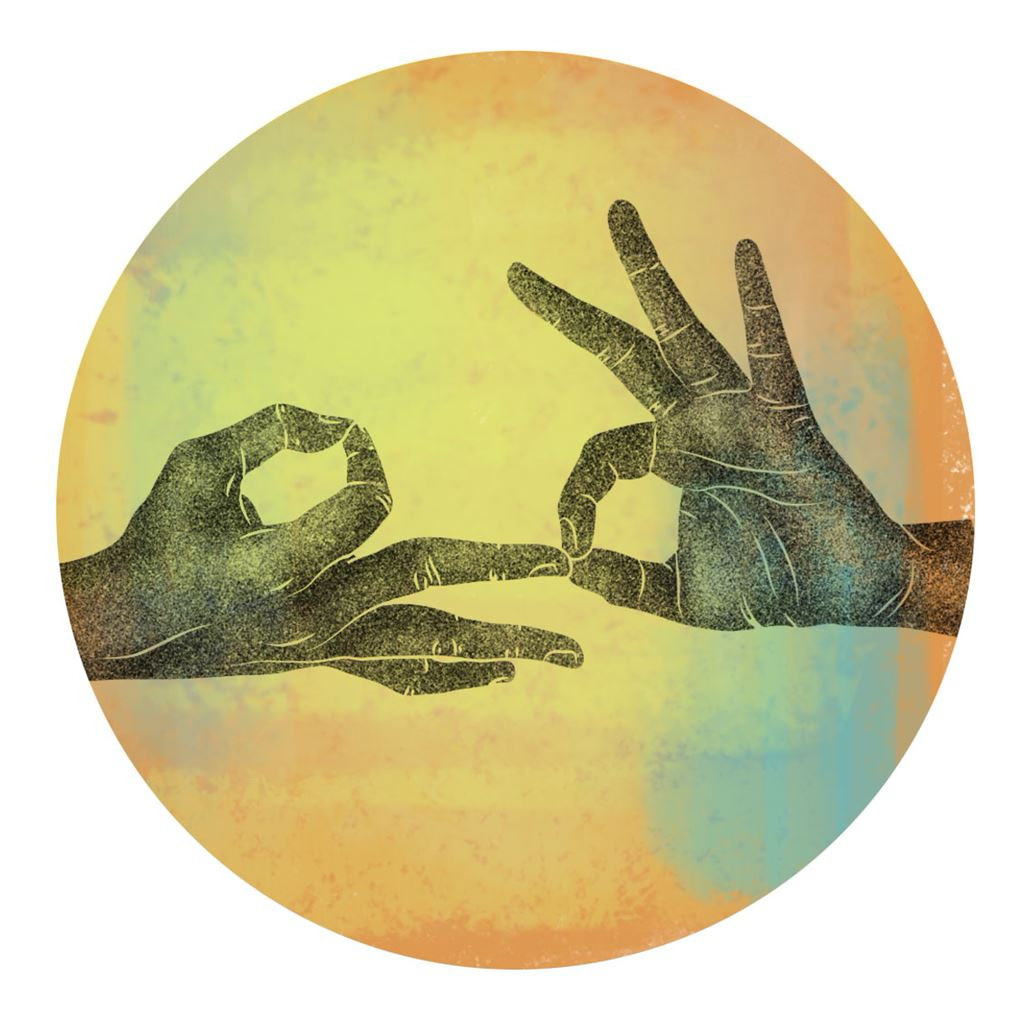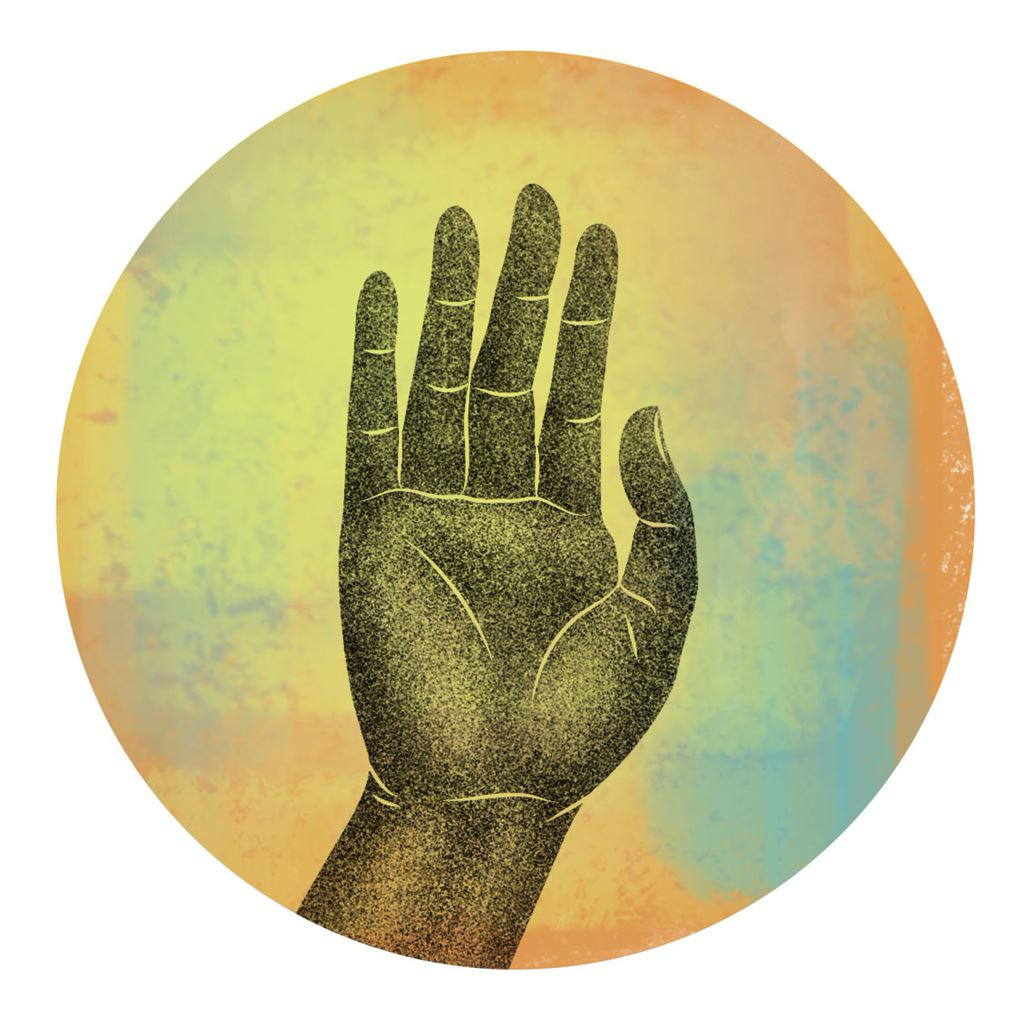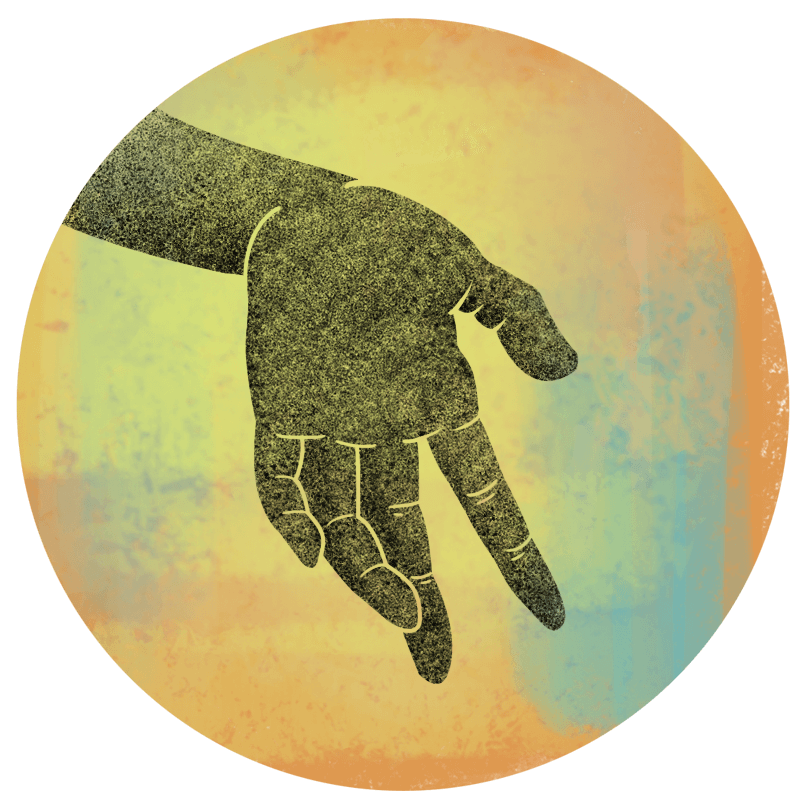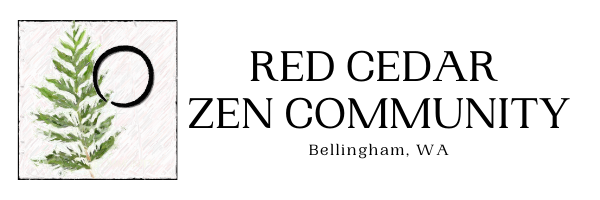Nomon Tim offers a reflection on the stories of our lives, and those of the eight great events in the life of the Buddha, during the community's Rohatsu one-day sitting.
Stream audio:
Stream video:
Tim's talk notes:
Good morning,
Why are you here? Why are you practicing? What's your story?
The Rohatsu retreat is a celebration of a central story: the story of Buddha and Buddha's awakening. And of course we all bring our own stories of who we are, what Buddha is, what the world is. We are swimming in a sea of stories always.
And they aren't always even our stories. Like a story your parents told you that you aren't good enough that comes part of your story and becomes such a barrier. Or stories from a dominant culture that an oppressed group take in and internalize.
But the wonderful thing is, as powerful as they can be, they're still just stories. Stories can change. Stories can be seen though - wait, a minute! New stories can be told. Stories can inspire us and lift us up. Stories have power. And stories are just stories. Are they real? Is anything?
Our minds want the Buddha story to be an organized system of learning, growth, and healing. We have issues, the world has issues, we want solutions, how do we get them. Hey Buddha, what should I do? How should I think about things?
Through most of the centuries the story of Buddha's awakening has been one of a set of eight stories of his life that have been celebrated, told and retold, and depicted in a tremendous amount of art which was part of how stories have always been told but all the more so in mostly non-literate societies: you "read" the stories in the paintings and carvings and sculptures you see at the temple. Several of these stories include miracles, emphasize dreams, and point to other far out happenings. The Eight Great Events (ashtammaha-pratharya) are not exactly the story we're used to.
And this is largely because when Westerner's met this Buddha they didn't like all of the magical and mystical stuff so they ripped those bits out and went on scholarly quests to try to narrow it down to what we consider the true facts, the "real" story. I'm most of the way through a big long scholarly book called The Thousand and One Lives of the Buddha about this. And the point he makes is that actually these early Western scholars were writing their own story of the Buddha with their own cultural biases - reinventing the Buddha. So we have received a Buddha who's kind of an ordinary, if very skilled and determined man, who goes on a great heroic spiritual journey.
In the past I've done my best to tell different versions of this heroic spiritual journey story on Rohatsu, it's a wonderful story. But perhaps a bit problematic, too, feeding as it does our relentless drive towards accomplishment and attainment and analysis of the best ways to get there.
Here are the stories of the Eight Great Events. Some of these you've heard of I'm sure, probably some you haven't. And it's worth noticing what's not here are a lot of details of what the Buddha taught, how to do meditation and so on.
Buddha's Birth
Queen Maya had a dream. At midsummer on a full moon night, she dreamed of a white elephant entering her side. This is a miraculous conception that results in the birth of the future Buddha. After her pregnancy has advanced she started journeying home to her parents' to give birth. She stopped for a walk in a grove at Lumbini, now in Nepal. Reaching up to hold a bough of a sal tree, labour began. Maya stood with her right hand over her head, holding a curving bough - a pose familiar in Indian art, often taken by yakshini tree-spirits. Her feet are crossed, giving a graceful tribhanga pose. The Buddha emerged miraculously from her side, which is sometimes shown with him flying out, other times two male figures stand to the left, representing the Vedic gods Indra and Indra reaching out to hold the baby. Maya's sister Pajapati supports her.
The Buddha was able to stand and take seven steps almost immediately, ending by standing on a lotus flower, and the baby standing on this may be shown; in East Asia this subject became popular by itself, the most famous and one of the earliest at the Todaiji in Nara, Japan. Which is a place we'll go on our Japan trip. In some stories he makes a proud proclamation, “Above the heavens, below the earth, I alone am the world honored one.” Some baby!
Sometimes soon after this, tragically, his mother: Maya dies.
Then we jump right to….
Enlightenment of the Buddha
The Buddha's leaving home is a troubling thing for most Buddhist cultures which have made various attempts to explain it or make it okay that he left his family, so that's definitely not a Great Event. There are lots of stories and artwork about his subsequent aescetic practices - he ends up three quarters starved and there are so many powerful statues and pictures of this. Eventually he does start eating again, remembers a moment of deep peace as a boy, and resets his practice. At Bodh Gaya, under the famous Bodhi Tree, a probable descendant of which survives beside the Mahabodhi Temple, he say down resolving not to get up again until all was clear. The tradition recounts that the enlightenment was preceded by the "assault of Mara", kind of Buddha's evil altar ego who tries to tempt and distract and block the Buddha from awakening. Mara challenges the Buddha's right to acquire the powers that enlightenment bring, and asked him for a witness to attest his right to achieve it. In reply Buddha touched the ground with his right hand outstretched, asking Pṛthivi, the devi of the earth, to witness his enlightenment, which she did. A wonderful earth-centered moment.
Sometimes the art of this great event shows Mara and his army of demons, or his three beautiful daughters, who attempt to prevent the Buddha's enlightenment by distracting him from meditation with seductive movements. (There's plenty of misogyny in Buddhism I'm afraid, but also some rays of light).
The we go to…
Buddha's first sermon
Buddha first Dharma Talk the "Sermon in the Deer Park", is recorded in the text called the "The Setting in Motion of the Wheel of the Dharma Sutta". Among other key Buddhist doctrines it set out the Four Noble Truths and the Middle Way. It was delivered at Sarnath, some weeks after his enlightenment, to five named disciples who are often depicted in the artwork. The Buddha is in the lotus position, and his hands are always shown in the Dharmachakra Pravartana Mudrā, where his two hands mime his metaphor of "setting in motion the Wheel of the Dharma". This is generally only used in images of the Buddha when representing this moment.

Then the fourth great event I'd never heard of before:
The monkey's offering
This took place during the Parileyyakka Retreat at Vaishali. A monkey offers honey to Buddha, who is shown in the lotus position, with his begging bowl in his lap. In some versions the Buddha initially rejected the honey because it had bee larvae, ants or other insects in it, but after the monkey carefully removed these with a twig his gift was accepted.
It is the most obscure of the events, and relatively uncommonly depicted before it became one of the Eight Great Events around the 8th century so the stories were evolving back then too, no surprise. It is also rather unclear from the texts why it is connected to the city of Vaishali, but this was an important city with other connections with the Buddha, who preached his last sermon there.
He left his begging bowl in the city when he departed, and this, which became an important cetiya or relic, is the indispensable identifying element in the most reduced images, when even the monkey is not shown. The monkey may be shown, and also an elephant who also protected Buddha and gave him water. Each of these had divergent and initially unhappy after-stories.
The monkey, overcome with excitement when his gift is accepted, fell or jumped down a well in some versions, but was later saved and turned into a deva, or was reborn as a human who joined Buddha's sangha as a monk.
The fifth event I did know about. It concerns the Buddha's jealous cousin Devadatta. These stories are so humanizing of the Buddha to me. He had troubles including a jealous rival. Devadatta tries to take over, then he tries to split the sangha up which seems to succeed at first, a bunch of monks leave with him. But Buddha sends who of his top students, Ananda and Mahakashyapa off to do dharma talks with the break away monks - I think Ananda cleverly gave his while Devadatta was having a nap and they all returned to the Buddha. Devadatta eventually gets so tweaked out that he makes three attempts to kill the Buddha. All fail and this Great Event is one of them.
Taming Nalagiri the elephant
This is the scene of Devadatta trying to kill Buddha by setting the ferocious elephant Nalagiri on him, at Rajgir. Buddha pacifies the elephant, who kneels before him. Buddha is usually shown standing, with his hand in the abhayamudra, with his right hand held open and the palm vertical. Abhaya mudra is symbolic of fearlessness and good intentions. In the artwork the elephant is usually much smaller, at the scale of a small dog compared to Buddha, and shown bowing to Buddha. Sometimes a small figure of Ananda, stands by Buddha. So the Buddha can pacify angry beasts with his poise, dharma, and mudras.

The sixth event is sometimes mentioned in our later Buddhism in connection to the Heart Sutra:
Descent from Tavatimsa Heaven
Some years after his enlightenment, Buddha visited the Tavatimsa heaven, where he was joined by his mother (from the Tushita heaven). For three months he taught her the Abhidhamma doctrine, before descending again to earth at Sankassa. Larger depictions show the Buddha descending the central one of three ladders or steps, often attended by Indra and Brahma, lords of the Tavatimsa heaven. Buddha makes the varadamudra - a gesture of granting wishes or mercy. A small figure of the nun Utpalavarana may be waiting for the Buddha below. The event is still celebrated in Tibet, in a festival called Lhabab Duchen. In the later Mahayana versions the Buddha teaches his mother the Heart Sutra too.

Then the seven Great Event is also one I'd not heard of before:
Miracle at Shravasti
In this story Six Teachers from other practices show up to challenge the Buddha saying they can demonstrate their powers, and thus the superiority of their Dharma, and to everyone's surprise the Buddha agrees (it turns out he doesn't want his disciples to be showing off with miracles but it doesn't apply to him) and he says he'll show them up by performing a miracle the next day at the foot of a mango tree. In desperation the Six Teachers and their agents spend the night tearing out all of the mango trees in the royal gardens.
But his just ends up meaning the Buddha does a preliminary miracle where the Buddha eats a mango fruit and plants the seed, after washing his hands over the area, a full mango tree immediately grows. And sits down for the main event: the "multiplication of Buddhas", where Buddha baffles the others by multiplying his form into several Buddhas, who preach to the assembled crowd.
This miracle is sometimes depicted with another miracle from an earlier occasion. When the Buddha returned home to his home kingdom of Kapilavastu following his enlightenment, his fellow tribesman refused to bow to him because he was a junior member of the tribe. In order to ensure that they paid him proper respect as an enlightened one, the Buddha levitates and emits water and fire from his body and alternates their positions. This results in the Buddha's father, King Suddhodana, bowing to him in respect, with the rest of the Shakya Tribe following suit. After the Buddha returns to the ground and sits down it suddenly starts raining, with the rain only falling on people who wanted to get wet, and no rain falling on those who wanted to remain dry.
So some miracles! You can imagine what the Western scholars did with these when they were writing their "scholarly" and more correct, says them, versions of the Buddha's story: CUT!
The Death of the Buddha
And finally it's hard to understate the importance of the last Great Event, the Paranirvana, the Death of the Buddha - at least of his physical body, the nirmanakaya. This story has been told and retold and reinvented more than any other. And the retelling in reinventing and chosing what to put in and take out continues to this day. Here's a modern version written for a religious studies website in 2018:
Forty-five years had passed since the Lord Buddha's enlightenment, and the Blessed One was 80 years old. He and his monks were staying in the village of Beluvagamaka, which was near the present-day city of Basrah, Bihar state, northeast India. It was the time of the monsoon rains retreat, when the Buddha and his disciples stopped traveling.
Like an Old Cart
One day the Buddha asked the monks to leave and find other places to stay during the rainy season. He would remain in Beluvagamaka with only his cousin and companion, Ananda. After the monks had left, Ananda could see that his master was ill. The Blessed One, in great pain, found comfort only in deep meditation. But with the strength of will, he overcame his illness.
Ananda was relieved but shaken. When I saw the Blessed One's sickness my own body became weak, he said. Everything became dim to me, and my senses failed. Yet I still had some comfort in the thought that the Blessed One would not come to his final passing away until he had given some last instructions to his monks.
The Lord Buddha responded, What more does the community of monks expect from me, Ananda? I have taught the dharma openly and completely. I have held nothing back, and have nothing more to add to the teachings. A person who thought the sangha depended on him for leadership might have something to say. But, Ananda, the Tathagata has no such idea, that the sangha depends on him. So what instructions should he give?
Now I am frail, Ananda, old, aged, far gone in years. This is my eightieth year, and my life is spent. My body is like an old cart, barely held together.
Therefore, Ananda, be islands unto yourselves, refuges unto yourselves, seeking no other refuge; with the Dharma as your island, the Dharma as your refuge, seeking no other refuge.
At the Capala Shrine
Soon after he had recovered from his illness, the Lord Buddha suggested he and Ananda spend the day at a shrine, called the Capala Shrine. As the two elderly men sat together, the Buddha remarked upon the beauty of the scenery all around. The Blessed One continued, Whosoever, Ananda, has perfected psychic power could, if he so desired, remain in this place throughout a world-period or until the end of it.
The Buddha repeated this suggestion three times. Ananda, possibly not understanding, said nothing.
Then came Mara, the evil one, who 45 years earlier had tried to tempt the Buddha away from enlightenment. You have accomplished what you set out to do, Mara said. Give up this life and enter Parinirvana [complete Nirvana] now.
The Buddha Relinquishes His Will to Live
Then the Blessed One, clearly and mindfully, renounced his will to live on. The earth itself responded with an earthquake. The Buddha told the shaken Ananda about his decision to make his final entry into Nirvana in three months. Ananda objected, and the Buddha replied that Ananda should have made his objections known earlier, and requested the Tathagata remain.
To Kushinagar
For the next three months, the Buddha and Ananda traveled and spoke to groups of monks. One evening he and several of the monks stayed in the home of Cunda, the son of a goldsmith. Cunda invited the Blessed One to dine in his home, and he gave the Buddha a dish called sukaramaddava. This means "pigs' soft food." No one today is certain what this means. It may have been a pork dish, or it may have been a dish of something pigs like to eat, like truffle mushrooms.
Whatever was in the sukaramaddava, the Buddha insisted that he would be the only one to eat from that dish. When he had finished, the Buddha told Cunda to bury what was left so that no one else would eat it.
That night, the Buddha suffered terrible pain and dysentery. But the next day he insisted in traveling on to Kushinagar, located in what is now the state of Uttar Pradesh in northern India. On the way, he told Ananda not to blame Cunda for his death.
Ananda's Sorrow
The Buddha and his monks came to a grove of sal trees in Kushinagar. The Buddha asked Ananda to prepare a couch between to trees, with its head to the north. I am weary and want to lie down, he said. When the couch was ready, the Buddha lay down on his right side, one foot upon the other, with his head supported by his right hand. Then the sal trees bloomed, although it was not their season, pale yellow petals rained down on the Buddha.
The Buddha spoke for a time to his monks. At one point Ananda left the grove to lean against a door post and weep. The Buddha sent a monk to find Ananda and bring him back. Then the Blessed One said to Ananda, Enough, Ananda! Do not grieve! Have I not taught from the very beginning that with all that is dear and beloved there must be change and separation? All that is born, comes into being, is compounded, and is subject to decay. How can one say: "May it not come to dissolution"? This cannot be.
Ananda, you have served the Tathagata with loving-kindness in deed, word, and thought; graciously, pleasantly, wholeheartedly. Now you should strive to liberate yourself. The Blessed One then praised Ananda in front of the other assembled monks.
Parinirvana
The Buddha spoke further, advising the monks to keep the rules of the order of monks. Then he asked three times if any among them had any questions. Do not be given to remorse later on with the thought: "The Master was with us face to face, yet face to face we failed to ask him." But no one spoke. The Buddha assured all of the monks they would realize enlightenment.
Then he said, All compounded things are subject to decay. Strive with diligence. Then, serenely, he passed into Parinirvana.
Artistic Depictions
Traditionally the death took place between two sal trees (the same species under which he was born), which may be shown behind him, as may their tree-spirits in the branches. There are many monks gathered all around.
My conclusions
Why did I spend so much time with the Buddha's death at this celebration of his awakening? A story we much prefer I think. Well because my understanding of how this tradition grew and evolved and was experienced and appreciated in the 2500 years before it go to our shores is that's the story that was most central. And most people in Buddhist cultures related to these 8 great events and especially the paranirvana as what "Buddha" is. Not as a step by step guide to spiritual growth and personal development. That's a modern emphasis.
The first Westerners to encounter Buddhism in the cultures in which it's practiced were mostly missionaries, Jesuits first and then Protestants. For the first few centuries they were scornful. A heretical mixed up magic-filled religion of these heathens. Just a myth. Sometimes even trying to fold it into Christianity, the Buddha was a forgotten brother of Christ or his mother Maya is actually Mary, mother of Christ, and the whole was a big mix up a surprisingly distorted version of Christ's story. Or they trivialized Buddha just an ordinary man who had nothing on their guy, the son of God.
But then in the middle of the 19th Century Buddha made a huge turn around in the Western imagination. A different story of "just a man" - one who was wise beyond our understanding. Who taught a brilliant method, a great philosopher, or the original psychologist who could heal the world with his knowledge. Sadly, this new group of enthusiastic new folks pointed out the brilliant Buddha has now been shrouded in myths about miracles, so they got to work stripping those away and writing a new story of Buddha. Modern day scholars are calling this the "Modern Buddha" or the "Scientific Buddha." And this Buddha has made a big influence on us.
The funny thing is that 19th century Buddhist leaders grabbed onto this as a lifeline and a defense from being overrun by the Protestant missionaries. Yes, that's right, our religion is actually way more sensible than Christianity and it has this central technique anyone can do: meditation. These teachers didn't try to do away with all of the religious aspects, if you went to the temples where they practiced it was still plenty religious but they emphasized meditation in a new way. So we're also recipients of that strange turn of events.
Who knows what Suzuki Roshi and other Asian teachers who started teaching Westerners in the 1960's and 70's thought of all of this if they thought about it at all. They were innovators too, deciding what to emphasize. What would make sense to these folks? We think of Zen as quite plain and down to earth, and maybe it is relatively, but we'll see in Japan that even that gets quite elaborate and mystical. (And I know only a few of us can go - we'll take pictures and share when we get home for sure!).
Not to mention the American teachers who went to Thailand and Burma to study meditation with Asian teachers and very deliberately brought back just the meditation teachings and not the rituals resulting in Insight Meditation, Vipassana, which is more or less another new version of Buddhism.
So anyway I thought it'd be helpful to share some perspectives on "buddha" - what are we talking about when we think of Buddha? A man, a story, a myth. Many overlappping stories told by many people and cultures for thousands of years, ever evolving and changing. And here we are, disciples of Buddha.
Happy Rohatsu. May all being awaken.
